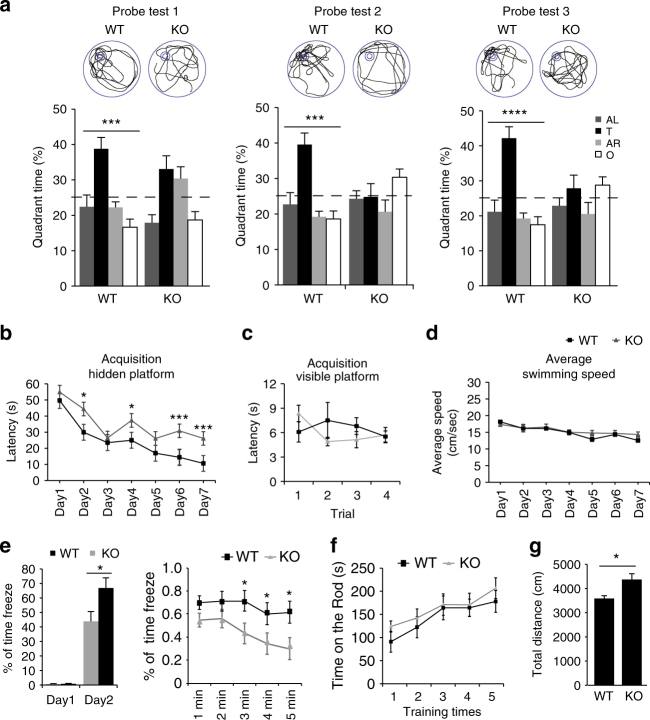Fig. 1.
Phf8 null mice show impaired learning and memory. a Morris water maze. Percentage time spent in each quadrant during the probe trials and representative swim trajectory of each group were given after 3 (probe test 1), 5 (probe test 2), and 7 (probe test 3) days of training (wild type (WT), n = 17; KO, n = 11; paired two-tailed t-test for water maze test). Four quadrants: adjacent left (AL), target quadrant (T), adjacent right (AR), opposite quadrant (O). b The escape latency time to reach the hidden platform during the 7-day training (WT, n = 17; KO, n = 11; unpaired two-tailed t-test). c The escape latency time to reach the visible platform within four trials given after probe test 3. d Average swimming speed of animals during the training with hidden platform. e Contextual fear conditioning test. Left, the baseline freezing time (Day 1) was recorded before foot shocks exposure to mice. The percentage of freezing time in the training context was measured 24 h after the conditioning (Day 2). Right, the freezing behavior of every minute observed during testing phase of contextual fear conditioning. The percentage of freezing time displayed significant difference in the last 3 min (WT, n = 15; KO, n = 12; unpaired two-tailed t-test). f Motor performance on the rota-rod. Both WT and Phf8 KO mice were given 5 trials on an accelerating rota-rod (4–40 r.p.m. over 5 min) within 1 day. The average duration time that mice stay on rota-rod in each trail was shown. (WT, n = 10; KO, n = 10). g Open-field test. The total moving distance traveled in 20 min. (WT, n = 20; KO, n = 19; unpaired two-tailed t-test,). All data are represented as mean ± s.e.m. *p < 0.05, ***p < 0.001 and ****p < 0.0001)

